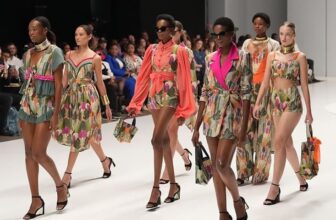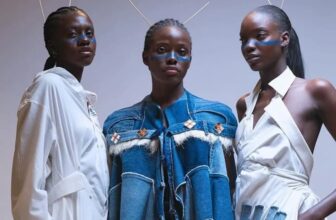The fashion industry hasn’t always been widely known for being accessible. There are stereotypes and standards that have shaped the industry for years, influencing everything from runway styles to what we see in stores.
But, that’s all starting to change. As more people start to bring the importance of inclusion and accessibility to light, the world of fashion is finally starting to take notice, and technology is helping.
Tech and accessibility are changing the face of fashion in many ways. Together, they’re making it possible for people with disabilities or heightened senses to feel and look their best. Older individuals who might struggle with self-esteem issues are also benefitting from these changes, and anyone who has felt intimidated by the industry before might finally be able to see it from a different perspective.
With that in mind, let’s take a closer look at tech and accessibility in the world of fashion.
Clothing Designed with Inclusivity in Mind
Why is it really so important for the fashion industry to be accessible? If major designers and brands within the industry want to remain relevant and stand the test of time, accessibility is essential, from how easy it is for someone to put on and take off their own clothes, to ensuring apparel is sensory-friendly. Sensory-friendly clothing ideas include:
- Using natural fabrics that don’t itch;
- Apparel that’s easy to get on and off without zippers or buttons;
- Clothes that fit well without clinging to the skin;
- Fewer tags or seams which could cause irritation.
Thankfully, adaptive clothing is becoming more common among popular retailers. Target, for example, has a full line of adaptive clothing for both adults and children, designed to fit the needs of those with disabilities or sensory issues. As a major retail brand and an affordable place where many families buy their clothes, the fact that they’re featuring adaptive clothing shows where the trend of accessibility is going in the fashion industry.
The clothes you wear can have a greater impact on your health than you might realize. They can affect your mobility, posture, temperature, and more. Thanks to advancements in technology allowing for better fabrics and innovations that allow for more adaptivity, these health risks might not seem as overwhelming, and the more people who jump on board with accessible fashion, the easier it will be for other brands to manufacture adaptive items, too.
Innovations in Wearable Tech
Wearable technology has made leaps in advancements over the last decade. What started out as something trendy that people wore to track steps or monitor daily activity has grown into something extremely beneficial for those with illnesses and/or disabilities. In the fashion world, some of the most notable advancements in wearable technology include smart glasses which provide on-demand visuals to help the blind, and wrist-worn wearables that can detect when a seizure is about to occur.
It’s also important to note that wearable tech has advanced when it comes to how it can be worn, too. We’re used to seeing smartwatches and other smart devices wrapped around the wrist. While wrist monitoring is likely here to stay, things like glasses and other prosthetic pieces are already making moves in the world of wearable tech. Even virtual reality headsets are changing the game for people with disabilities, allowing them to experience more real-world settings to which they might not have not otherwise had access.
The Future of Fashion and Technology
Clearly, we’ve seen major advancements in terms of technology and fashion, and there’s no indication that it will slow down any time soon. We can take a look at current trends to more accurately predict what fashion might look like in the future.
For example, sustainability is at the forefront of so many people’s minds. Fast fashion is widely known for being harmful to the environment, so we can look for tech advancements like demand forecasting to reduce textile waste, recycling garments, and coming up with innovative new textiles that are more sustainable.
Fashion is also likely to continue to become more exclusive for all genders, backgrounds, and ages. For older individuals, in particular, it might often seem like you’re overlooked by the fashion industry. But, what you wear can have a direct impact on your self-esteem, especially as you age. Fashion companies can utilize things like color psychology and data collection efforts to create clothing designed to make everyone feel their best.
Finally, fashion technology will make it easier for everyone to have similar opportunities when it comes to creating their ideal wardrobe. Things like AI and virtual reality are already making it possible for consumers to have a more immersive shopping experience, even from the comfort of home.
It’s clear the scope of the fashion industry is changing for the better. Inclusivity and accessibility will continue to open up the industry for everyone, with a focus on functionality as well as style.






